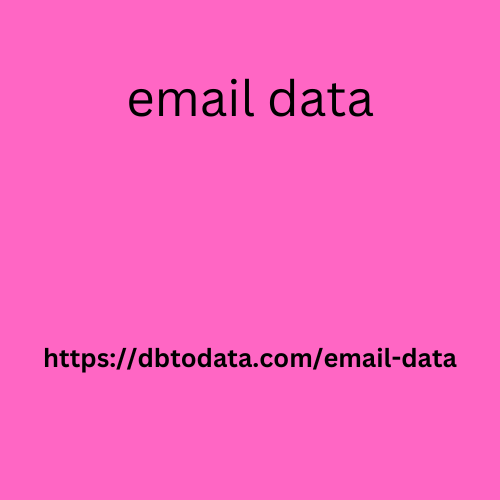2022 was certainly not a dull year for the blue-bird social network. In addition to all the controversies that are usually the subject of Twitter, from celebrities to politics, the big topic was the network itself, acquired by Elon Musk after a real purchase saga.
But the moves did not stop there. The new owner remained controversial, firing hundreds of employees, promising dubious changes and Burundi Email List 32648 Contact Leads suspending the accounts of journalists who criticized his actions.
One of the latest changes promised by Elon
Musk was the character limit: increasing tweets from 280 to 4000 characters , modifying the main attribute of the network: being a microblogging service.
Below, we’ll tell you everything that happened on Twitter in 2022 related to its sale, the consequences known so far, and how brands can react.
Elon Musk starts buying Twitter shares
It all started in January, when Elon Musk began buying Twitter shares almost daily, reaching 5% of the social network in March. Once he reaches that limit, Musk must publicly disclose the purchase, according to the US Securities and Exchange Commission.
However, Musk delayed the formal disclosure , which only took place in April. This move allowed him to acquire another 4.2% of Twitter before the news sent the stock soaring.
By owning 9.2% of the social network, Elon Musk became its largest shareholder . As a result, he was appointed to the company’s board of directors , but he declined the invitation, even after tweeting several proposals for changes on his personal account.
Twitter is sold for $44 billion
Also in April, Elon Musk offered to buy Twitter for $44 billion , a proposal accepted by the company’s board of directors. However, in May, Musk put the purchase on hold and, in July, announced his plans to withdraw, questioning the number of fake and disconnected users on the network.
A legal battle then began to force the businessman to honour his initial proposal and acquire the social network. The dispute lasted until October, when Musk fulfilled the agreement and acquired Twitter for the amount initially offered, after a deadline stipulated by the US court.
Musk initiates dozens of changes to Twitter
The social network was already working on implementing some features , such as the edit button and the possibility of opting for a chronological feed.
Musk’s entry, however, brought much more controversial changes. Take a look at some of them:
ADVERTISEMENT
COVID-19 Disinformation Policy
Nearly a month after Elon Musk bought Twitter, the social network announced that it would no longer enforce its policy on misleading information regarding COVID-19 .
In practice, the site will no longer flag tweets that spread misinformation on the topic, raising concerns among users, the press and public bodies, as it is one of the most widely used social networks worldwide.
After a disastrous attempt to make verified accounts available to any user
without any verification of information, Twitter has returned with this possibility. Twitter Blue allows users to purchase the blue badge for $8 per month. If the purchase is made through iOS, the amount increases to $11 per month.
The option is not yet available in all countries. However, to buy a blue stamp, it will only be necessary to authenticate the cell phone number and the user will not be able to change data such as photo and name in the seven days prior to the purchase.
In addition to the changes to the blue seal, coloured seals were also created, which are still being implemented: gold for companies and grey for governments and multilateral accounts.
Character increase
Another recently announced change is the increase in characters. In response to a user on Twitter, Elon confirmed that the network will be increasing the text limit from 280 to 4000 characters .
The change has not yet appeared and it is not known when and how it should happen. However, it seems to be related to trying to influence users to use the tool itself to share larger texts, instead of resorting to screenshots of text applications.
Links to other social networks were prohibited
The site also announced that it will ban the inclusion of links to other social networks in tweets, in order to promote them. The networks include Facebook, Instagram, Mastodon, Truth Social, Tribal, Post and Nostr .
So-called cross-posting, such as including YouTube videos in a Tweet, will not be prohibited.
Controversies surrounding the platform continue
In addition to the announced changes, often on Musk’s own account, Twitter is also experiencing internal problems following his arrival.
One is mass firings via email, followed by a wave of sudden resignations. Amid all this confusion, Twitter’s HR department had to create a new internal category, “accidental firing,” as vital areas were left without employees.
Additionally, the Trust and Safety Council, a board created to help combat hate speech on the platform, has been disbanded. As a result, the social network already appears to be facing a rising tide of hate speech, which has increased dramatically under Elon Musk’s administration, according to a survey conducted by groups including the Center for Countering Digital Hate and the Anti-Defamation League.
Another controversy, this time involving users, was the blocking of accounts by automotive journalists such as The New York Times and Washington Post, who expressed opinions contrary to Musk’s ideas.
This action was strongly criticised, even by European public bodies, as it violates press freedom. An example is the tweet by Vera Jourova, Vice-President for Values and Transparency of the European Commission:
Elon Musk justifies his actions under the pretext of improving Twitter’s performance and reaching more users.
ADVERTISEMENT
However, he has caused confusion wherever he goes, whether by suddenly implementing ideas without considering their consequences, or by creating an environment more conducive to extremist views.
Yesterday, Musk opened a poll on Twitter asking the community if he should step down as CEO of the company. He promised to abide by the poll’s results. Most people answered “yes.” Let’s see what happens!
What can marketers expect in 2023?
With so much news, many of it negative, Twitter seems to be ending the year without knowing what the next one will be like. And for marketing professionals it is no different, it is difficult to understand the directions that the network is taking.
One of the biggest concerns for everyone is that Twitter is relaxing its rules so much that it becomes fertile ground for fake news and hate speech.
In addition to analyzing whether a social network delivers the results a brand aims to achieve, it is important to understand how being present in this environment can have detrimental consequences.
After all, no company wants to be part of a network that spreads extremist content and disinformation.
It is therefore up to us to continue monitoring developments and re-evaluate investment in the blue bird social network, at least until it becomes a stable and safe environment for brands and users again.
Alternatively, for those brands that see the point in maintaining a presence on a microblogging social network, one can consider migrating to sites that have emerged as potential replacements: Mastodon and Koo.
Remember to plan for this change and understand whether it really makes sense for your audience and their marketing goals. In the end, it is up to brands to define where and when to produce content, paying attention to the consequences of this decision.
Share
Bruna DouradoRock author vector
Author





